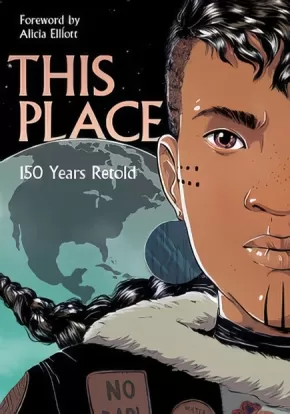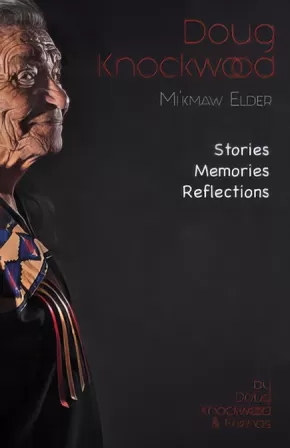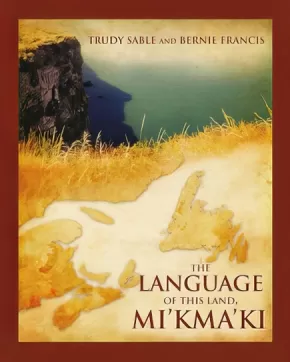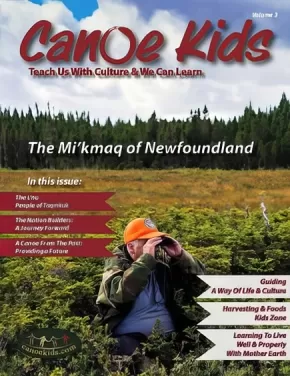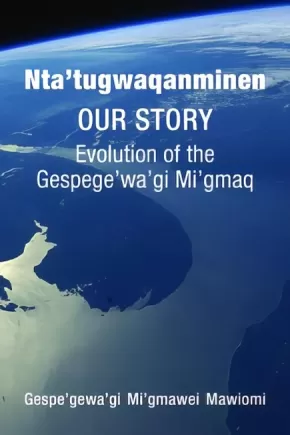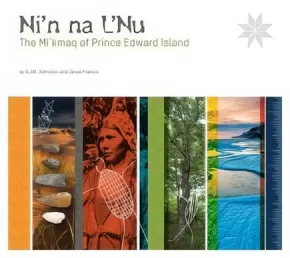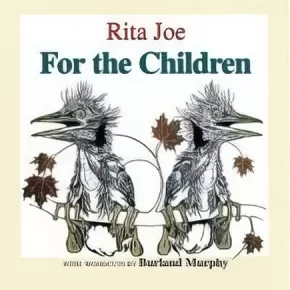
Mi'kmaq (Mi'gmaq)
31
-
39
of
39 Results;
Sort By
Go To
of 3
This Place: 150 Years Retold
$39.00
Format:
Paperback
Text Content Territories:
Indigenous Canadian;
ISBN / Barcode: 9781553797586
Synopsis:
Synopsis:
Explore the past 150 years through the eyes of Indigenous creators in this groundbreaking graphic novel anthology. Beautifully illustrated, these stories are an emotional and enlightening journey through Indigenous wonderworks, psychic battles, and time travel. See how Indigenous peoples have survived a post-apocalyptic world since Contact.
Watch for new stories and familiar characters:
- Métis businesswoman Annie Bannatyne and Louis Riel
- Oka Crisis, Meech Lake Accord, and Kelowna Accord
- the Berger Inquiry into the Mackenzie Valley Pipeline
- Jack Fiddler, an Anishinaabe shaman charged as a serial killer
- Rosie, an Inuk girl coming of age during WWII
- wâpanacâhkos, an Indigenous woman sent back from the future to the early 2000s
- fishing raids and salmon wars in Listuguj, Quebec
- Francis Pegahmagabow, WWI sniper and veterans’ rights activist
- the impact of the Sixties Scoop and the child welfare system
- Chief Billy Assu and the potlatch bans in British Columbia
Reviews
Niigaanwewidam James Sinclair, one of the contributors to this work, says the book is, an “opportunity to shine a light on the stories most Canadians haven’t heard, to learn from Indigenous communities from 1867 to present day—whether these stories are influenced by the creation of Canada or not."
"…breathtaking comics anthology…this mix of powerful storytelling and memorable illustrations is a place to begin a dialogue with Indigenous peoples in Canada." —The Globe and Mail
"The anthology is visually gorgeous. Each story is powerfully conveyed, reflecting a time and moment in the Indigenous history of Canada…great read for any age." —Quill & Quire, starred review
"This Place is the graphic novel I’ve waited my whole life for, and the graphic novel Canada has needed for 150 years. The stories contained within its pages are both beautifully rendered and vitally necessary. They represent a history not only largely untold and unknown, but one obscured, hidden from sight, so that other stories may occupy a privileged place in the defining a national story. Their importance is exquisitely captured on these pages, told by some the leading artists working today. This is an essential book, for comic fans, teachers and anyone who wants to learn the stories of this place we now share." —Jesse Wente, broadcaster and film critic
"A landmark collection of Indigenous comics that redraws how we understand the past, present, and future of Indigenous communities and cultures since Confederation. Each chapter immerses us in a gripping story about real people brought to life through vivid and affecting artwork. This collection proves the power of comics storytelling to create fresh pathways to knowledge and new ways of envisioning Indigenous experiences." —Candida Rifkind, University of Winnipeg
"This is the power of storytelling. It’s going deeper and truer than the history books and the newspaper accounts. It’s bringing the stories to the people for the people and doing it for the right reasons: to teach and to illuminate. This Place: 150 Years Retold is the dawn to a new storytelling tradition that doesn’t need to be held back. It should be shouted forward from now on." —Helen Kubiw, CanLit for LittleCanadians
Educator Information
This graphic novel is recommended for ages 15+.
Recommended in the Canadian Indigenous Books for Schools 2019-2020 resource list for grades 7 to 12 for Art Education, English Language Arts, Law, and Social Studies.
These stories refer to real incidents and include graphic violence, abuse, and death.
A teacher's guide is available: This Place: 150 Years Retold Teacher Guide
Additional Information
250 Pages
Doug Knockwood, Mi'kmaw Elder: Stories, Memories, Reflections
$21.00
Format:
Paperback
Text Content Territories:
Indigenous Canadian; First Nations; Mi'kmaq;
ISBN / Barcode: 9781552669495
Synopsis:
Synopsis:
Freeman Douglas Knockwood is a highly respected Elder in Mi’kmaw Territory and one of Canada’s premier addictions recovery counsellors. The story of his life is one of unimaginable colonial trauma, recovery and hope.
At age 6, Knockwood was placed in the Shubenacadie Residential School, where he remained for a year and a half. Like hundreds of other Mi’kmaw and Maliseet children, he suffered horrible abuse. By the time he reached his twenties, he was an alcoholic. He contracted tuberculosis in the 1940s, had one lung and several ribs removed.
Having hit rock bottom, Knockwood, gained sobriety in his thirties through Alcoholics Anonymous. He went on to become a much sought after drug and alcohol rehabilitation counsellor in Canada. Many of Doug’s initiatives have been implemented across Canada and used by thousands of people, both Indigenous and non-Indigenous. Looking back now, says Doug, “I realize I wasn’t only helping them. They were helping me to gather strength in my presentations, in feeding them the knowledge I received, the same as it was fed to me. That helped me to gain confidence in myself; doing all these things that I didn’t know I could yet do”.
This book is an in-depth look at Doug Knockwood’s life that also casts a wide and critical glance at the forces that worked to undermine his existence and the indomitable spirit of a man who recovered from, yet still struggles to overcome, those forces.
Educator Information
The 2018-2019 Canadian Indigenous Books for Schools list recommends this resource for Grades 10-12 for these subjects: English Language Arts, Social Justice, Social Studies.
Additional Information
128 pages | 6.00" x 9.00" | Written by Doug Knockwood and Friends
Living Treaties: Narrating Mi'kmaw Treaty Relations
$27.95
Editors:
Format:
Paperback
Text Content Territories:
Indigenous Canadian; First Nations; Mi'kmaq;
Grade Levels: 12; University/College;
ISBN / Barcode: 9781771086868
Synopsis:
Synopsis:
Regardless of Canada's governmental attitude of entitlement, First Nations, Métis and Inuit lands and resources are still tied to treaties and other documents. Their relevance seems forever in dispute, so it is important to know about them, to read them, to hear them and to comprehend their constitutional significance in contemporary life.
This book aims to reveal another side of the treaties and their histories, focusing on stories from contemporary perspectives, both Mi'kmaw and their non-Mi'kmaw allies, who have worked with, experienced and indeed lived with the treaties at various times over the last fifty years. These authors have had experiences contesting the Crown's version of the treaty story, or have been rebuilding the Mi'kmaq and their nation with the strength of their work from their understandings of Mi'kmaw history. They share how they came to know about treaties, about the key family members and events that shaped their thinking and their activism and life's work.
In Living Treaties, the authors offer the stories of those who have lived under the colonial regime of a not-so-ancient time. Herein are passionate activists and allies who uncover the treaties, and their contemporary meanings, to both Mi'kmaq and settler societies and who speak to their future with them. Here also are the voices of a new generation of indigenous lawyers and academics who have made their life choices with credentials solidly in hand in order to pursue social and cognitive justice for their families and their people. Their mission: to enliven the treaties out of the caverns of the public archives, to bring them back to life and to justice as part of the supreme law of Canada; and to use them to mobilize the Mi'kmaw restoration and renaissance that seeks to reaffirm, restore and rebuild Mi'kmaw identity, consciousness, knowledges and heritages, as well as our connections and rightful resources to our land and ecologies.
Additional Information
324 pages | 6.00" x 9.00"
The Language of this Land, Mi'kma'ki
$24.95
Format:
Paperback
Text Content Territories:
Indigenous Canadian; First Nations; Mi'kmaq;
Grade Levels: University/College;
ISBN / Barcode: 9781771087094
Synopsis:
Synopsis:
The ancient landscapes of Eastern North America are reflected in the language and cultural expressions of its Indigenous peoples, the Mi'kmaq. The rhythms, sounds and patterns of their language are inextricably bound with the seasonal cycles of the animals, plants, winds, skies, waterways and trade routes.
The Language of this Land, Mi'kma'ki is an exploration of Mi'kmaw world view as expressed in language, legends, song and dance. Using imagery as codes, these include not only place names and geologic history, but act as maps of the landscape. Sable and Francis illustrate the fluid nature of reality inherent in its expression - its embodiment in networks of relationships with the landscape integral to the cultural psyche and spirituality of the Mi'kmaq.
Language has sustained the Mi'kmaq to the present day, a product of a lineage of Elders who spoke it, who danced the dances and walked this land, Mi'kma'ki, carrying its traditions forward despite centuries of cultural disruption, discrimination and degradation.
Additional Information
132 pages | 7.50" x 9.25"
Canoe Kids Volume 3: The Mi'kmaq of Newfoundland
$22.95
Format:
Paperback
Text Content Territories:
Indigenous Canadian; First Nations; Mi'kmaq;
ISBN / Barcode: 9781926852102
Synopsis:
Synopsis:
Canoe Kids Vol. 3 The Mi'kmaq of Newfoundland (Ktaqamkuk) is the third issue of a 24 edition series designed as family books for kids all ages. This eight to ten year project will see the Canoe Kids Team embed with 24 Peoples. The mandate for the full-colour book (150+ full colour high res photographs) is Exploring Indigenous Cultures through Authentic Indigenous Voices. The publication balances culture, equity and the environment in a beautiful mix that reminds the reader of the pictorial quality of National Geographic with a more in depth editorial content.
This third issue (in a series of 24) focuses on the Mi'kmaq of the Newfoundland and north Atlantic coast. In 150 pages the reader is introduced to the Mi'kmaq People who kindly assisted the Canoe Kids staff by allowing access to their traditional territory. Canoe Kids acknowledges the generosity of the Council of Flat Bay and Conn River.
Educator Information
Each edition follows a common theme and features:
1: Compelling and beautiful pictorials that draw you into the stories and place of the featured community
2: The story of the vessel used by the featured Peoples
3: Art and Food
4: A Kids Zone
5: Resources for kids, parents and educators
6: Stories by and of the featured Peoples in each edition
7: Extraordinary pictures of the lives, land and waters of the featured Peoples
The materials are equal parts cultural and environmental. The latter is a natural offshoot of the former as Indigenous cultures are wrapped around and through the lands and water and sky both spiritually and from a harvesting and gathering perspective. Indigenous Peoples have long been the caretakers of Mother Earth and we can all learn from these experts whose message is perhaps more relevant today than ever.
Indigenous communities have always included the little ones in their circles and talk and teach to them in the same way they talk and teach to young adults and adults. Canoe Kids decided to follow that inclusive way of life for the layout of each book. Rather than create editions for different age groups, Canoe Kids decided to have one book for all ages.
K through 3 use Canoe Kids to read beautiful and ancient stories. There is beautiful original art to explore and a Kids Zone with puzzles, word searches, colouring, cutouts and more. Mid grades use the materials to study the culture, food and wildlife of the featured cultures. Grades 8 through 12 use stories that are more in depth from Dr. David Suzuki about the environment and there are discussion articles about living well and properly with Mother Nature as well as articles about the history and geography of the featured People.
Additional Information
150 pages | 8.50" x 11.00"
Nta'tugwaqanminen: Our Story: Evolution of the Gespege'wa'gi Mi'gmaq
$19.95
Format:
Paperback
Text Content Territories:
Indigenous Canadian; First Nations; Mi'kmaq;
ISBN / Barcode: 9781552667712
Synopsis:
Synopsis:
Nta’tugwaqanminen provides evidence that the Mi’gmaq of the Gespe’gewa’gi (Northern New Brunswick and the Gaspé Peninsula) have occupied their territory since time immemorial. They were the sole occupants of it prior to European settlement and occupied it on a continuous basis. This book was written through an alliance between the Mi’gmaq of Northern Gespe’gewa’gi (Gaspé Peninsula), their Elders and a group of eminent researchers in the field with the aim of reclaiming their history, both oral and written, in the context of what is known as knowledge re-appropriation. It also provides non-Aboriginal peoples with a view of how Mi’gmaq history looks when it is written from an Indigenous perspective.
There are two voices in the book — that of the Mi’gmaq of the Gespe’gewa’gi, including the Elders, as they act as narrators of the collective history, and that of the researchers, who studied all possible aspects of this history, including advanced investigation on place names as indicators of migration patterns.
Nta’tugwaqanminen speaks of the Gespe’gewa’gi Mi’gmaq vision, history, relation to the land, past and present occupation of the territory and their place names and what they reveal in terms of ancient territorial occupation. It speaks of the treaties they agreed to with the British Crown, the respect of these treaties on the part of the Mi’gmaq people and the disrespect of them from the various levels of governments. This book speaks about the dispossession the Mi’gmaq of Gespe’gewa’gi had to endure while the European settlers illegally occupied and developed the Gaspé Peninsula to their own advantage and the rights and titles the Mi’gmaq people still have on their lands.
Author Note: The Gespe’gewa’gi Mi’gmawei Mawiomi is the organization that represents the three communities of the northern part of Gespe’gewa’gi. Research associates Richard Jeannotte and Donald Jeannotte, both Gespe’gewa’gi Mi’gmaqs, and Danielle E. Cyr, senior scholar at York University, wrote the seven first chapters. Troy Jerome, current Mi’gmawei Mawiomi Secretariat Executive Director / Nutewistoq wrote Chapter 8.
Educator Information
This book would be useful for courses in social studies, history, and English language arts. Recommended for grades 8-12, as well as college/university courses.
This book would be useful for courses in social studies, history, and English language arts. Recommended for grades 8-12, as well as college/university courses.
Table of Contents
Foreword by Satsun (Herb George)
Introduction: How We Came to Write Nta’tugwaqanminen
Our Territory in Prehistoric Times
Our Place Names
Our Creation Story and Fundamental Myths
Our Historical Presence in Gespe’gewa’gi
The Treaty Relationship Between Mi’gmaq of Gespe’gewa’gi and the British Crown
Good Faith and Dispossession
Our Constitutional Rights as Gespe’gewa’gi Mi’gmaq
The Gespe’gewa’gi Mi’gmaq in Contemporary Times
Conclusion: Our Story Continues
Notes
Bibliography
Index
Foreword by Satsun (Herb George)
Introduction: How We Came to Write Nta’tugwaqanminen
Our Territory in Prehistoric Times
Our Place Names
Our Creation Story and Fundamental Myths
Our Historical Presence in Gespe’gewa’gi
The Treaty Relationship Between Mi’gmaq of Gespe’gewa’gi and the British Crown
Good Faith and Dispossession
Our Constitutional Rights as Gespe’gewa’gi Mi’gmaq
The Gespe’gewa’gi Mi’gmaq in Contemporary Times
Conclusion: Our Story Continues
Notes
Bibliography
Index
Additional Information
320 pages | 6.00" x 9.00"
320 pages | 6.00" x 9.00"
Ni'n na L'nu The Mi'kmaq of Prince Edward Island (1 in stock, in reprint)
$19.95
Format:
Paperback
Text Content Territories:
Indigenous Canadian; First Nations; Mi'kmaq;
ISBN / Barcode: 9781894838931
Synopsis:
Synopsis:
This lavishly-illustrated book tells a story through words and images that has never before been told, not in any single book. The focus is entirely on the Mi'kmaq of the Island, an island which for thousands of years has been known to the Mi'kmaq and their ancestors as Epekwitk. That name means "cradle on the sea" and no more poetic description of PEI has ever been penned. The story of the PEI Mi'kmaq is one of adaptation and perseverance across countless generations in the face of pervasive change. Today's environment is far from what it was millennia ago. So too, the economy, society, lifestyle, language and religion of the people has witnessed some dramatic shifts. Nonetheless, despite all the changes, today's Mi'kmaq feel deeply connected to the Island in its entirety and to their ancestors and the values they still share. This book tells those many stories, and communicates much more. While the book is a stand-alone publication, it is also a companion to a travelling exhibition of the same name.
- Winner of APMA Best Atlantic-Published Book Award
- Winner of PEI Book Award for Non-fiction
Real Justice: Convicted for Being Mi'kmaq: The Story of Donald Marshall Jr.
$12.95
Format:
Paperback
Text Content Territories:
Indigenous Canadian; First Nations; Mi'kmaq;
ISBN / Barcode: 9781459404397
Synopsis:
Synopsis:
When a black teen was murdered in a Sydney, Cape Breton park late one night, his young companion, Donald Marshall Jr., became a prime suspect. Sydney police coached two teens to testify against Donald which helped convict him of a murder he did not commit. He spent 11 years in prison until he finally got a lucky break. Not only was he eventually acquitted of the crime, but a royal commission inquiry into his wrongful conviction found that a non-aboriginal youth would not have been convicted in the first place. Donald became a First Nations activist and later won a landmark court case in favour of native fishing rights. He was often referred to as the "reluctant hero" of the Mi'kmaq community.
Reviews
"Bill Swan presents a straightforward, compelling narrative, easily followed, that will astound today's teenagers." — Joan Marshall, Resource Links
"the important subject matter, meticulous research, and ultimately balanced portrait of the flawed man Marshall was makes this an engrossing and enlightening read for curious teens."— CM: Canadian Review of Materials
"Much of this disturbing but well-researched book is impressively drawn directly from court documents and is part of the valuable Real Justice series, which features wrongfully accused Canadian youth and their fight for freedom."— Booklist Online
Educator Information
Interest age: From 13 To 17
Fry Reading Level [grade]: 5.0
Lexile Reading Level: HL770L
Additional Information
184 pages | 5.50" x 8.50"
For the Children
$18.95
Artists:
Format:
Paperback
Text Content Territories:
Indigenous Canadian; First Nations; Mi'kmaq;
ISBN / Barcode: 9781895415988
Synopsis:
Synopsis:
With the young person in mind, these strong, clear and encouraging poems from Rita Joe speak directly to all of us, a testament to courage and her hope for a better world. Down-to-earth and often humorous and a world honoured Mi'kmaw elder and Order of Canada recipient, in the book Rita Joe passes her torch to the young.
Born in 1932, in Whycocomagh, Rita Joe lived a hardscrabble existence, from foster home to foster home, experiences that helped her decide to admit herself to Shubenacadie Indian Residential School, a place most Mi'kmaq people had come to dread. It was a rare example of the child choosing Shubie, "to better myself," to get an education. That same determination compelled her to write about her personal combination of traditional Mi'kmaw spiritualism and Catholic faith, carrying forward her 'gentle war'. Her last poem, unfinished, was found in her typewriter when she died in March 2007.
Additional Information
52 pages | 8.00" x 8.00"
Sort By
Go To
of 3

